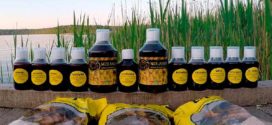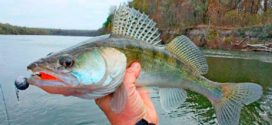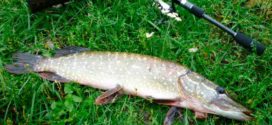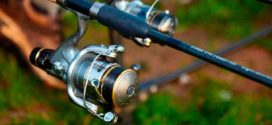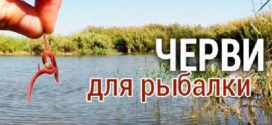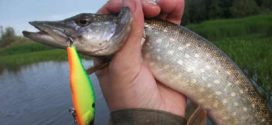Compared to rubber inflatable models, fabric boats for fishing (with PVC coating) have a lot of advantages. However, this a priori does not mean that it is a PVC boat that should be taken. There are many nuances, without taking into account which it makes no sense to make a decision to purchase just such a product.
Fishermen who neglect this or rely only on the advice of "experts" often face quite big problems after the acquisition. How to choose a PVC boat for fishing, what to evaluate before going to the store - all this will be the subject of detailed consideration.
A simple enumeration of all its parameters, technical characteristics is unlikely to be useful to the reader. He will be able to get acquainted with this independently, at the point of sale. The author will try to deal with the specifics of the purchase, relying not only on personal experience, but also on the opinions and reviews of his friends who are fond of fishing. And what will be useful, and with what you can disagree - everyone will understand for himself.
Content
Boat selection criteria
It’s worth pointing out right away that you shouldn’t look especially at prices or manufacturers when buying a PVC boat, you can get confused, since the range is very large. Moreover, according to fishermen, domestic products are in no way inferior to widely advertised imported ones, and in some respects even surpass them.
The explanation is simple - Russian boat manufacturers take into account the specifics of our climate, the peculiarities of fishing, and are more guided by this, sometimes losing in design. But what is more important for a fisherman - practicality, convenience or the appearance of such a craft?
Linear parameters
First of all, the length of the boat is estimated. The larger it is, the better the ability of the product to "gliding", the higher the permissible load. Basically, fishermen are guided by 3-meter models (maximum 3.8 m). This length of the PVC boat is considered optimal for amateur fishing based on 1 - 2 people (for example, spinning ). For three, a watercraft up to 4.2 m is enough.
payola type
This is the name of the bottom of the boat. For PVC products, there are two options.
Air Dec. This bottom is "soft", inflatable.Pros:
- The compactness of the boat, the ability to bring it into a "working" state alone.
- Less weight, the absence of some components, which simplifies the process of storage and transportation of the product.
Minuses:
- Stability is lower than that of analogues with a "hard" bottom.
- Such boats are not used on large bodies of water when you have to make long transitions.
- The number of fishermen in the boat, as a rule, is not more than 2.
- Restriction in the power of the installed "engine" (up to 10 hp).
- Possibility of damage to the bottom in shallow water.
It turns out that such models are not suitable for collective fishing.
Bottom "hard"Pros:
- Good water resistance.
- Minimal risk of damage to the bottom.
- Extended operating period.
- Such a boat can withstand a large load and is able to make longer transitions.
The disadvantage is the cost, which is higher than the air-deck models. Perhaps this is the only drawback of such PVC boats.
Material
It is clear that this is a PVC-coated fabric. But the difference is in the number of layers (hence, in density) and in the presence (absence) of reinforcement. Therefore, it is necessary immediately, and in the future, to decide whether a motor will be placed on the boat. If not, then a lighter product is sufficient, although, for example, fishing with a spinning rod from such a watercraft can be difficult.
Transom version
If it is simply fixed with PVC tapes, it is better to look for another model. The best option is when the transom is additionally fixed with special rubber overlays.
Valve type
Here it is short - better automatic. The method of inflating the balloons is also important. It’s faster with a compressor, but for small boats, the “frog” option will be more convenient and cheaper.
boat color
PVC, on the basis of which the boat is made, is quite sensitive to some external influences. In this case, you need to understand that ultraviolet gradually destroys the polymer (as well as many other materials). And although this process is lengthy, it is advisable to choose a light-colored boat for fishing, as it will better reflect the sun's rays. Moreover, unlike hunting, you do not need to disguise yourself on the water. Therefore, preference is given to silver and light gray models.
Manufacturer
If we summarize all the reviews, then the conclusion suggests itself - no difference. The main thing is that the products have a certificate. There are different opinions about boats from the Asian region. Somehow it is considered that everything “made in China” is, by definition, suspicious. At the same time, for some reason, it is forgotten that many firms (including ours) transfer part of their production capacities to this particular country, fortunately, there is no shortage of workers there. Therefore, some models of Chinese PVC boats have proven themselves quite well.
Additional things to consider
- Cylinder protection from below. The boat will have to be regularly pulled out of the water, and dragged. How is PVC protected from damage?
- How is the anchor eye made?
- Drain valves. If they are not there, then the liquid that has entered the boat will have to be scooped out manually.
Boat cost
Just a few examples to understand whether the family budget can withstand such an acquisition.
- "INTEX". Seahawk 3 series (68349). Rowing boat for 3 fishermen. Length 2.95 m; inflatable bottom; load capacity up to 300 kg. The price is 4,980 rubles.
- "Compact-290". For two with a length of 2.9 m. Possibility of installing a motor up to 3.5 hp. The price is 13,390 rubles.
- "Taiga". Series T-320. With three compartments, 3.15 m long, for three fishermen. The bottom is “hard” (plywood), under the engine up to 10 “horses”. Price - 19,780 rubles.
Practical recommendations for choosing
All of the above is mostly theory. What will you have to face in practice? It was then, after the purchase, that the fisherman faces a lot of questions, the answers to which are best found in advance.
Fishing area
Where do you most often (or just plan to) go? And here it is necessary to define:
- Possibilities for the delivery of PVC boats to the reservoir. After all, going fishing, we take with us a lot of things necessary. What kind of car, how much can you load into it, will just an additional roof rack be enough, or will you have to think about buying a trailer as well? If so, where to organize a parking place for him, especially in winter?
- specifics of fishing. Do you really need a motor for the boat? For fishing in relatively small reservoirs, a rowing craft is enough. It should also be taken into account that a model with an engine of more than 10 "horses" goes into the category of PLA, and it will have to be registered and receive a certificate for the right to drive (after appropriate training). And all this is not free!
Storage conditions
A disassembled PVC boat, depending on the model, can take from 2 to 3 "seats". For the owner of a private house, finding where to put everything is not difficult. If a fisherman lives in the city, but goes to catch in his “small homeland”, in the village, then it is even easier. The boat can be stored there, with parents, somewhere in a warm attic or in a barn.
But what about the garage? The place is not so convenient. First of all, due to the fact that PVC is “afraid” of low temperatures. Even if the box is insulated, you will have to think about how to provide additional thermal insulation for bags (bags) with all the accessories. And if it's a metal garage, "shell"? There is something to think about, and in advance.
When buying a boat, its suitability for operation, the absence of defects must be checked directly in the store. If the product is of high quality, then the seller will be happy to show it “in all its glory”. Pump up, assemble the kit. Particular attention is paid to the transom and the quality of all gluings. On the hull of a boat ready for use, there should be no wrinkles, scuffs or anything like that.
Hello, I am Alexander, the mastermind behind the blog.
In terms of career and free time, I connected my life with the forest. How else, when you live in Karelia! In this blog, I am responsible for the hunting, hiking and equipment sections. Welcome to my world!
 Survival Lessons Tips for the survivalist, fisherman and hunter
Survival Lessons Tips for the survivalist, fisherman and hunter
